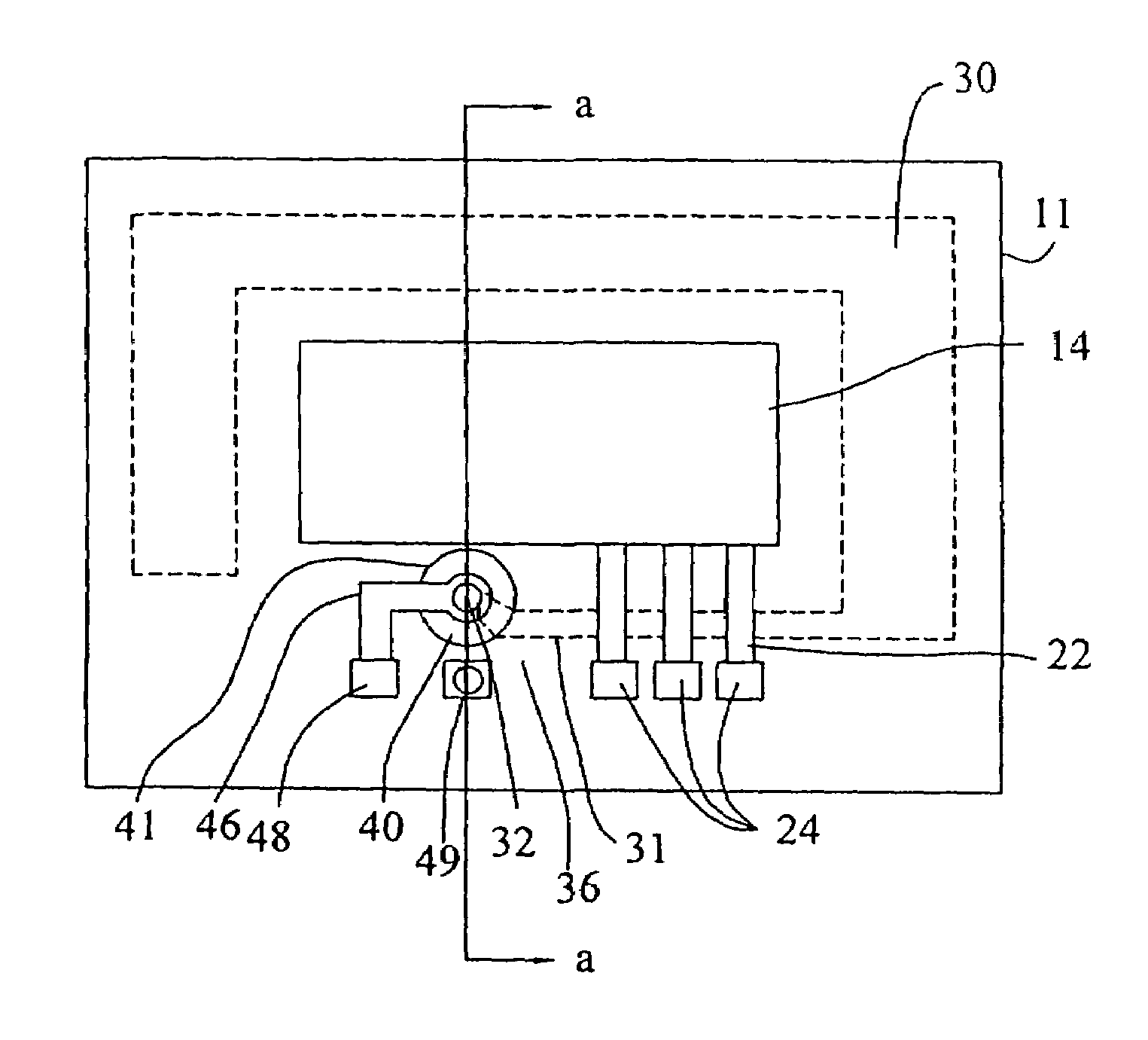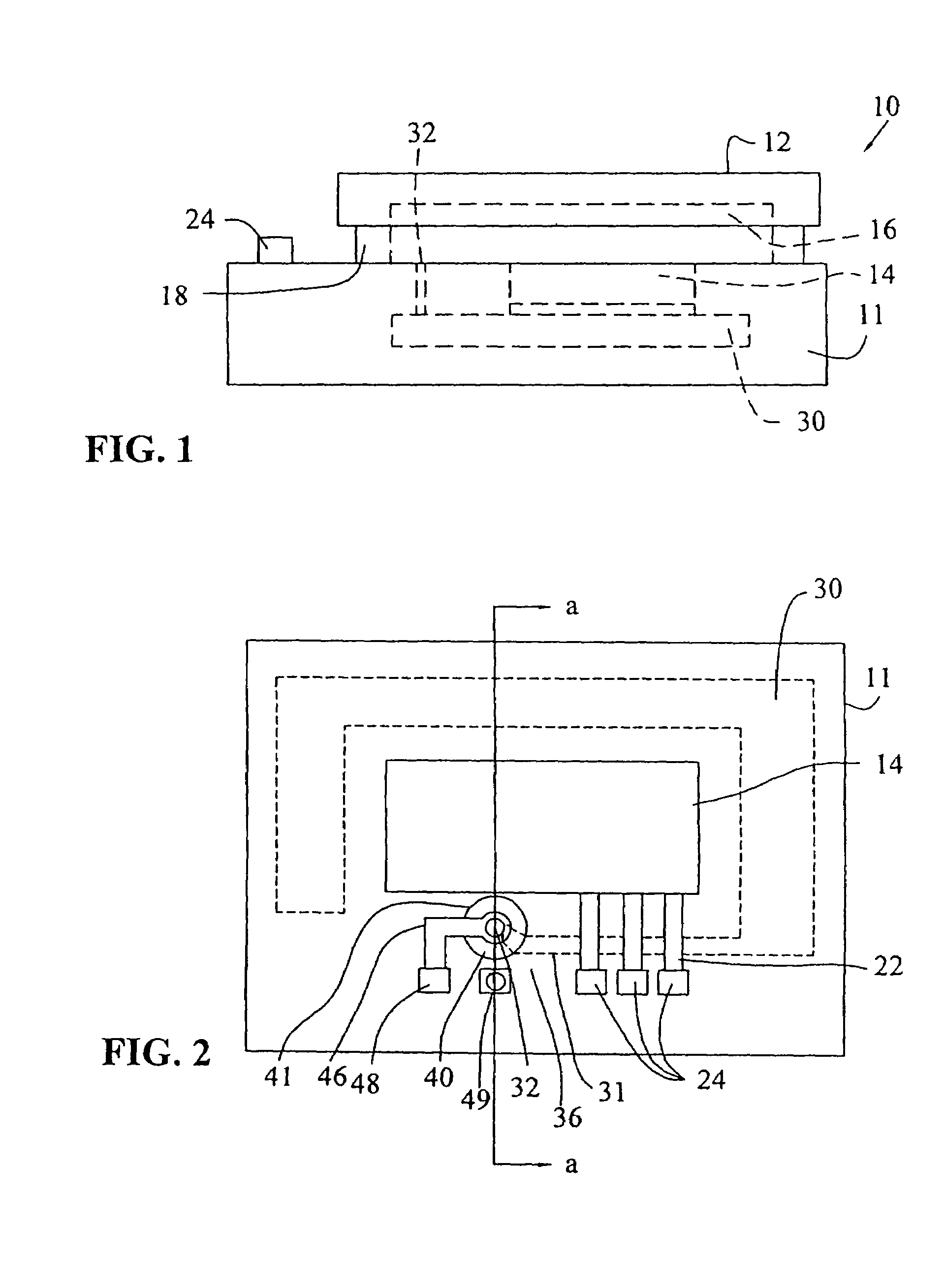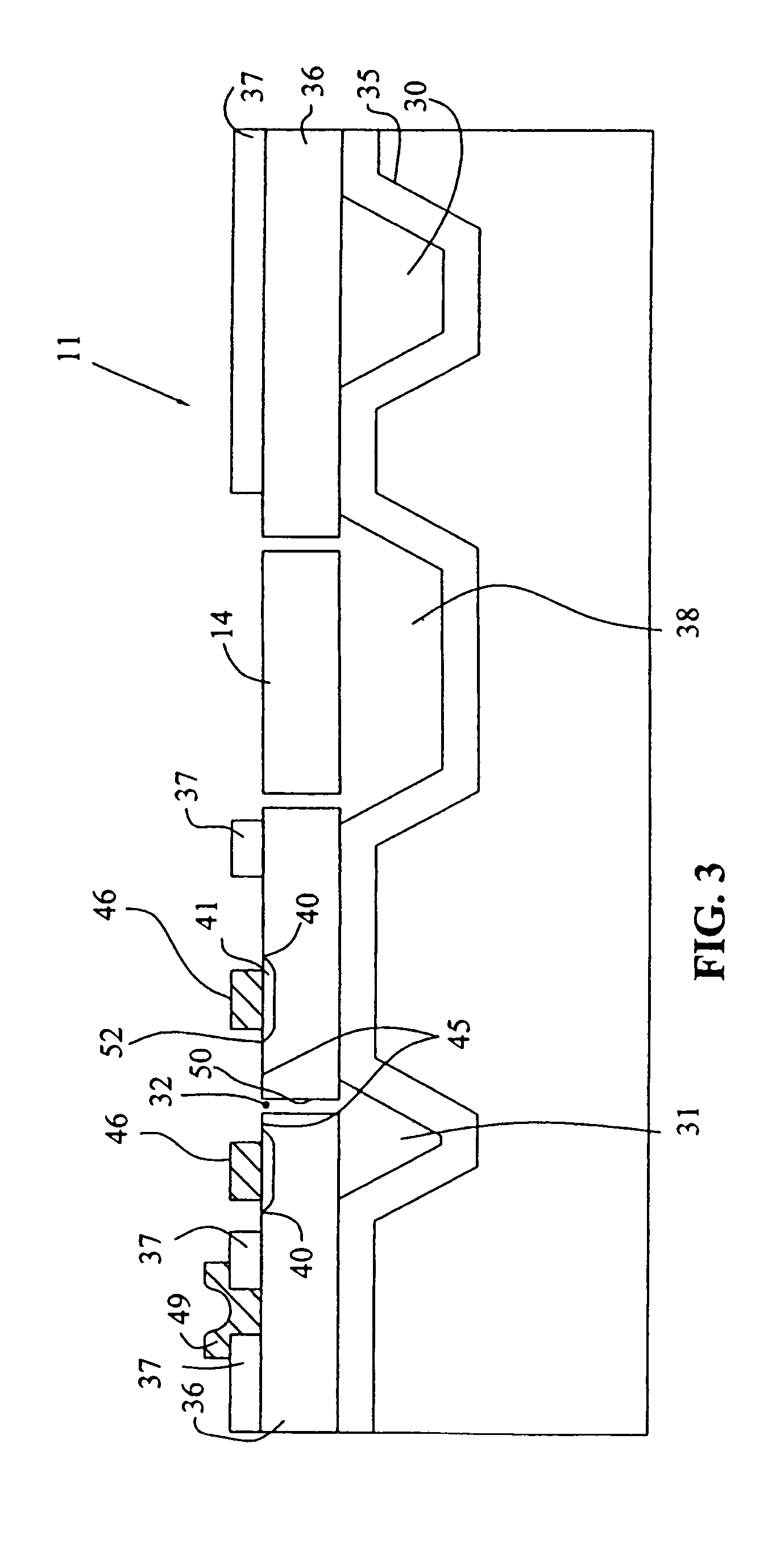Leak detection method and micro-machined device assembly
a micro-machined device and leak detection technology, applied in the direction of magnets of measurement instruments, instruments, and semiconductor/solid-state device details, can solve the problem and achieve the effect of measurable instability in diodes over a longer period of tim
- Summary
- Abstract
- Description
- Claims
- Application Information
AI Technical Summary
Benefits of technology
Problems solved by technology
Method used
Image
Examples
Embodiment Construction
[0025]The method of the present invention employs a reverse current to flow through an exposed, unpassivated, PN junction diode in a semiconductor substrate, and a determination of an instable reverse current, similar to that described in U.S. Pat. No. 6,074,891, herein fully incorporated by reference. The method is based on the discovery that when wet or when exposed to an environment that has a relative humidity greater than about 50%, the unpassivated junction diode characteristics show measurable instability. Once dry, however, the junction diode's characteristics return to normal, and dry but leaky devices are not detected. The method of the present invention assures measurable humidity levels remaining in the cavity so that the junction diode can electrically identify leaky devices.
[0026]FIG. 1 represents a semiconductor sensor or a micro-machined device in accordance with this invention. Device 10 in FIG. 1 is formed by bonding device wafer 11 to capping wafer 12, such that s...
PUM
 Login to View More
Login to View More Abstract
Description
Claims
Application Information
 Login to View More
Login to View More - R&D
- Intellectual Property
- Life Sciences
- Materials
- Tech Scout
- Unparalleled Data Quality
- Higher Quality Content
- 60% Fewer Hallucinations
Browse by: Latest US Patents, China's latest patents, Technical Efficacy Thesaurus, Application Domain, Technology Topic, Popular Technical Reports.
© 2025 PatSnap. All rights reserved.Legal|Privacy policy|Modern Slavery Act Transparency Statement|Sitemap|About US| Contact US: help@patsnap.com



